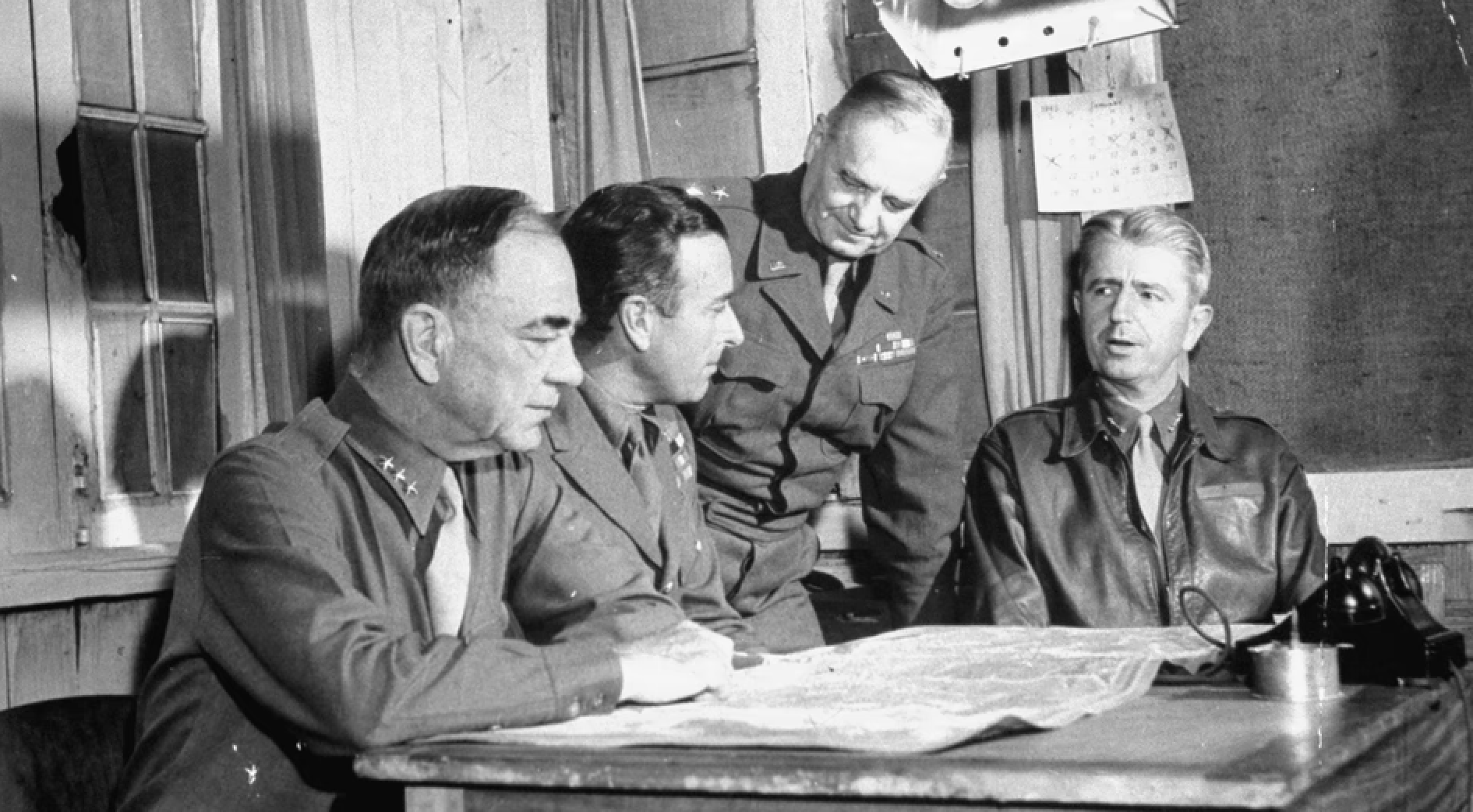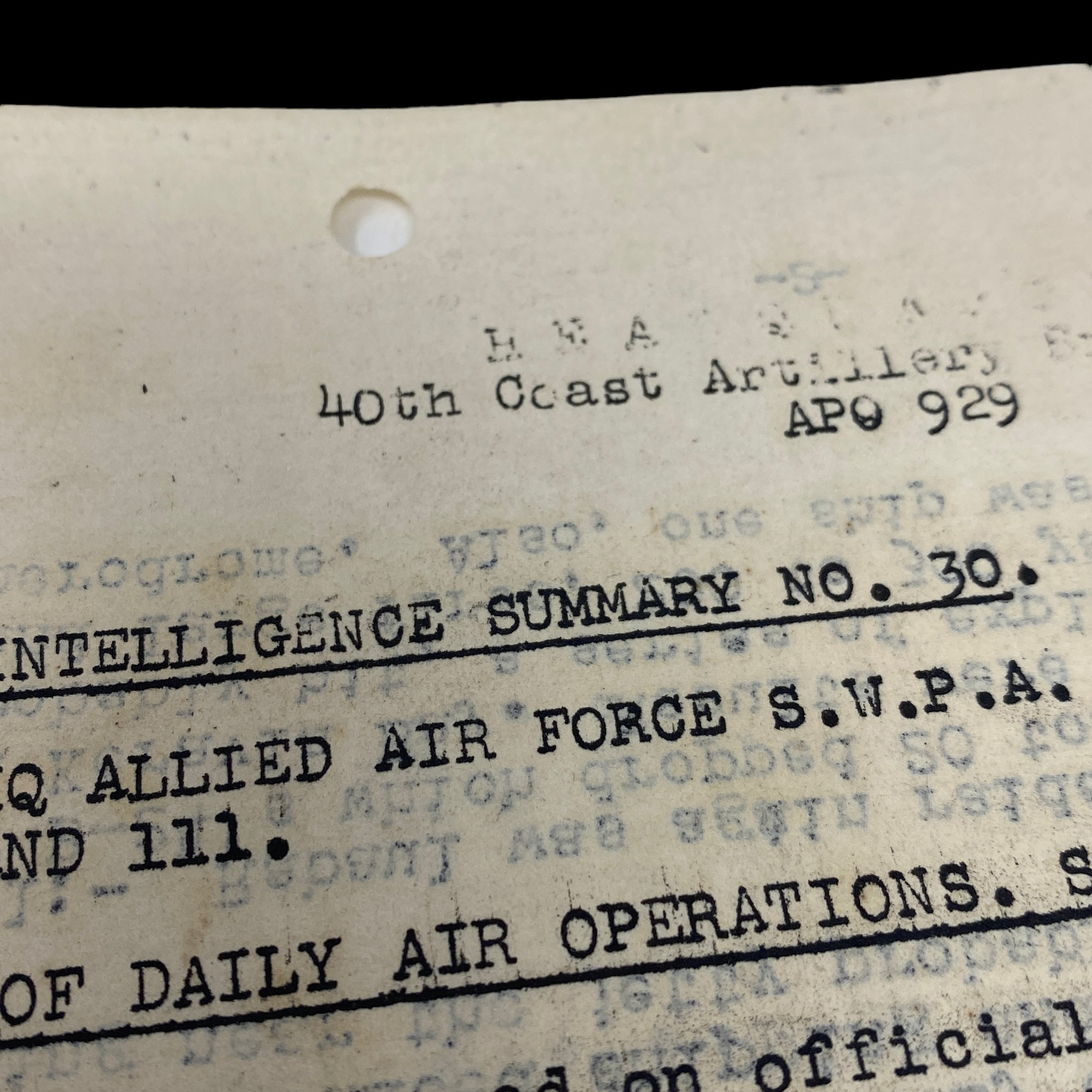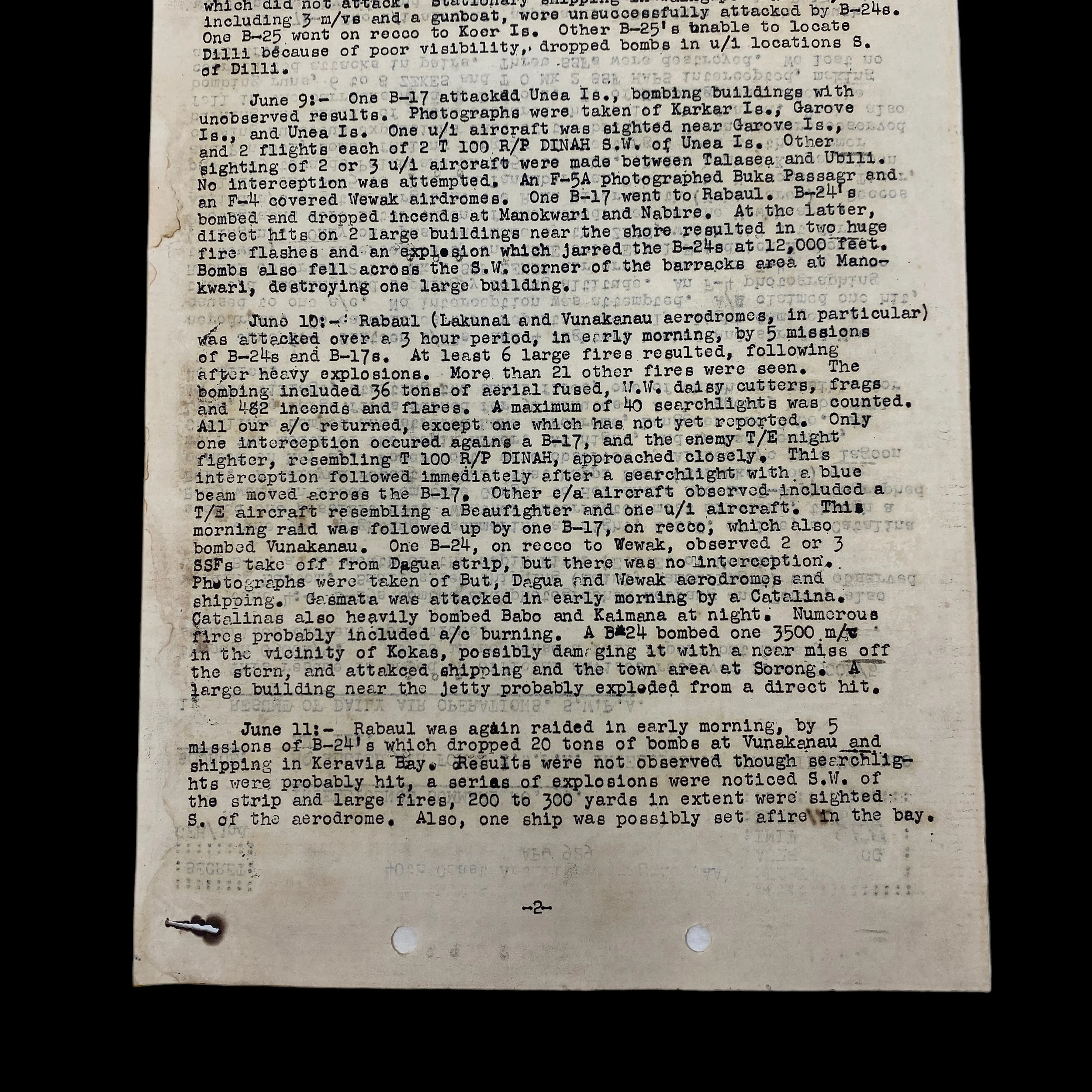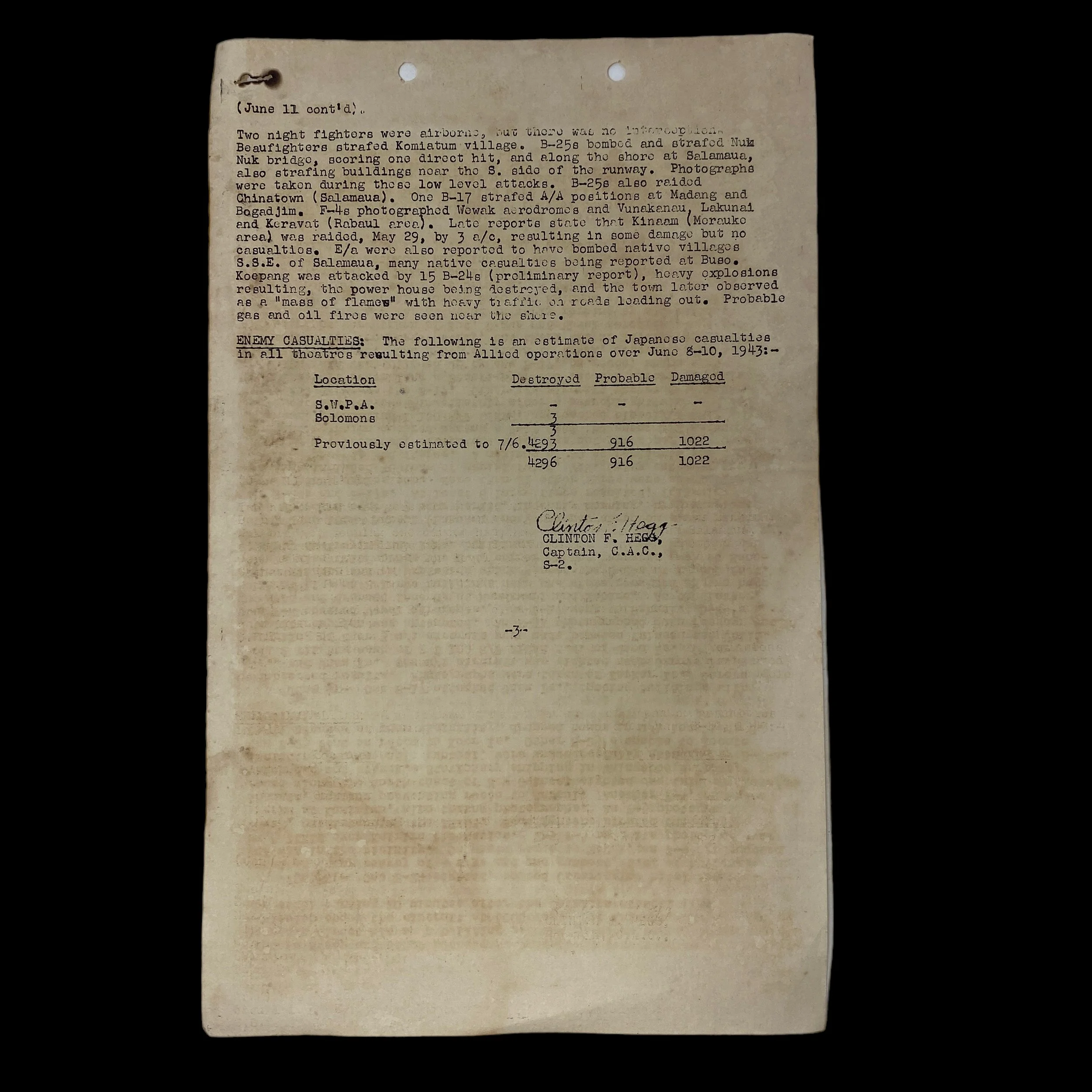RARE! WWII 1943 “SECRET” Pacific Theater Combat 40th Coast Artillery Brigade Intelligence Report














RARE! WWII 1943 “SECRET” Pacific Theater Combat 40th Coast Artillery Brigade Intelligence Report
Comes with a hand-signed C.O.A.
This original and museum-grade WWII artifact is a 1943 “SECRET” marked combat field report from the 40th Coast Artillery Brigade. This SECRET combat report details SECRET US and Allied intelligence and battle updates from the Pacific Theater. Because its combat intelligence report was meant for high-ranking officers. This intelligence report begins on June 4th, 1943, and gives SECRET combat intelligence regarding B-24 & B-25 bombing missions over Koepand, Tenau, Lautem, and Sepik River. This report also details the Japanese submarine, B-25 activity off Hollandia, Mappi Post, aerodrome strafing missions, , ZEKE interceptions and downings, B-17 missions, etc.
World War II marked a turning point in global history, with the Pacific Theater becoming one of its most significant battlegrounds. The success of the Allied forces in the Pacific hinged on their ability to gather and interpret intelligence accurately. "SECRET" combat intelligence reports played a pivotal role in this theater, helping to shape strategic decisions, plan operations, and ultimately secure victory.
The Importance of Intelligence in the Pacific Theater
The Pacific Theater of World War II was characterized by vast expanses of ocean, remote islands, and complex logistical challenges. Unlike the European Theater, where established and well-documented infrastructure allowed for easier access to information, the Pacific was largely uncharted territory. Intelligence became the cornerstone of strategic success, allowing the Allied forces to adapt to the ever-changing dynamics of warfare in this theater.
"SECRET" Combat Intelligence Reports
The "SECRET" combat intelligence reports were classified documents that contained valuable information about enemy forces, their movements, tactics, and strategies. These reports were typically generated by various intelligence agencies, including the Office of Naval Intelligence (ONI) and the Army Intelligence Service (AIS). The information they contained was highly sensitive, and access was restricted to those with appropriate security clearance.
Gathering Tactical Information
The primary role of combat intelligence reports in the Pacific Theater was to gather tactical information about Japanese forces. This included data on troop movements, naval deployments, and airfield construction. Such intelligence enabled Allied commanders to understand the evolving Japanese positions and adapt their own strategies accordingly. The reports often contained detailed maps, photographs, and diagrams, providing a comprehensive picture of the enemy's disposition.
Evaluating Japanese Codes and Ciphers
Cracking Japanese codes and ciphers was a crucial aspect of intelligence work in the Pacific. The ability to intercept and decipher Japanese communications allowed the Allies to gain insights into their plans and intentions. The "MAGIC" intelligence program, which focused on breaking Japanese diplomatic codes, played a pivotal role in the Pacific. The information gleaned from these intercepts was shared with commanders, ensuring they had timely and critical information.
Monitoring Weather and Geographic Data
The Pacific's vast expanse presented unique challenges, with changing weather patterns and geographic factors influencing military operations. Weather reports and geographic intelligence were vital in planning naval and aerial engagements. Accurate information allowed for the planning of naval routes, air missions, and amphibious landings while minimizing the impact of adverse weather conditions.
Assessing Japanese Technology and Industry
Combat intelligence reports also offered insights into Japanese technological advancements and industrial capabilities. This information helped the Allied forces understand the strength of Japanese weapons, aircraft, and naval vessels. It also allowed for the targeting of key industrial sites, further weakening Japan's war effort.
Importance of Intelligence in Key Pacific Battles
The significance of intelligence in the Pacific Theater is exemplified by several pivotal battles:
Battle of Midway (June 1942): Intelligence reports allowed the US Navy to anticipate and prepare for the Japanese attack on Midway Island. The intercepted messages provided critical insights into the Japanese plan. This intelligence was instrumental in the decisive American victory at Midway, which shifted the balance of power in the Pacific.
Guadalcanal Campaign (1942-1943): Intelligence reports played a crucial role in the Guadalcanal campaign. They allowed US forces to understand Japanese reinforcement efforts and adjust their own troop deployments. Timely intelligence also helped predict Japanese naval movements and contributed to several Allied victories during the campaign.
Island-Hopping Campaign: Intelligence reports enabled the Allies to identify weakly defended islands, strategically bypassing heavily fortified ones. This approach was key to minimizing casualties and conserving resources.
The use and importance of "SECRET" combat intelligence reports in the Pacific Theater during World War II cannot be overstated. These classified documents provided invaluable insights into enemy movements, codes, weather, and technology, which, in turn, shaped strategic decisions and operational planning. The successful application of intelligence in battles such as Midway, Guadalcanal, and the island-hopping campaign ultimately led to the defeat of the Japanese Empire in the Pacific. In the annals of military history, the intelligence efforts during World War II in the Pacific Theater stand as a testament to the critical role of information in shaping the outcome of a conflict on a global scale